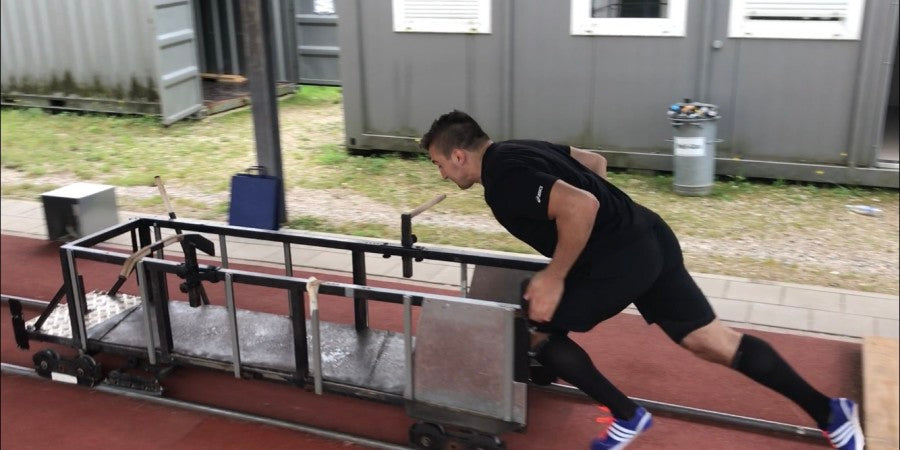
Fitness is Specific
Getting fit is the goal of everyone that trains. The first question that one has to ask is: what is fit? Everyone defines this differently. The simple reason for this is: fitness is specific. Especially in the context of competitive sports, the definitions are very different. And with it the training. A fact that is too often neglected. Training is the adaptation to a specific stressor. This stressor must be directly or indirectly related to the desired performance. Simply put, who wants to run a marathon has to run. If you want to ride a stage of the Tour de France you have to go cycling. If you want to score more goals you have to play more football.
The more unspecific the training, the more unspecific the performance. A simple example from the elite level of sports is the comparison of the best performances of Ashton Eaton, the 4 time World Champion, 2 time Olympic Champion and World Record Holder in the decathlon and thus the most successful decathlete of all time and thus a very „fit“ athlete with the records of the US High School and the World Record. At the US high school, it should be noted that this is not the university but the stage before, so its 17- and 18-year-old athletes who have set these records. The comparison of these best performances looks like this:
Comparison – Best Performance Ashton Eaton / US High School Record / World Record
100m sprint: 10.21s / 10.01s / 9.58s
Shot put: 15,40m / 20,65m / 23,12m
High jump: 2,05m / 2,31m / 2,45m
Pole vault: 5,05m / 5,57m / 6,16m
1500m: 4:14 min / 3:38 min / 3:26 min
How can it be that one of the most outstanding and most fit athletes of all time Ashton Eaton falls back so far against 17- and 18-year-old students and of course against the best athletes of the individual disciplines. The differences are serious. On Usain Bolt and the 100m world record, he loses almost 10m, in the shot put it is almost 8m difference and over 1500m he loses a complete round on the track against the world record holder.
The two key reasons for this are:
Mechanics and anatomy
Structure determines function – one of the most important principles of anatomy and thus mechanics in relation to competitive sports and thus a high level of fitness. So the Olympic champion in shot put Randy Barnes with a size of 1.94m and a body weight of about 132kg compared to Ashton Eaton with a height of 1.85m and a body weight of about 84kg has the potential for a much greater level of maximal strength, which is crucial for the acceleration of the shot, there Barnes is a big step ahead of Eaton from a mechanical standpoint. Thats an important factor when looking that 8m difference in their best performances. Over 1500m double Olympic champion Hicham El Guerrouj with a height of 1.76m and a body weight of about 58kg is a big step ahead in terms of running mechanics and running efficiency, which explains this difference, too.
In addition to less influenceable factors such as mechanics and anatomy, the second crucial and above all very influenceable factor is:
Training focus
The shot putter Randy Barnes trains only directly and indirectly for the shot put, depending on the training phase on 4 to 6 days per week. How often does Ashton Eaton practice the shot put, barely more than once a week. The variety of disciplines do not leave more training time. 1500m world record holder Hicham El Guerrouj also trains exclusively for the 1500m. While decathletes like Ashton Eaton usually do not train this discipline at all, as an improvement in this performance has a potential negative effect on all nine other disciplines that need primarily short distance explosive power. Also, the training volume required for 1500m would take too much time and too much recovery ability, which also has a potential negative effect on the performance of all other new disciplines.
Conversely, for the training of each individual, this clearly illustrates that in addition to mechanics and anatomy as a base, the specific focus of training is the crucial role in the specific adaptation.
Especially in the context of strength training, if you want to get better at pull-ups, do more pull-ups instead of lat pulldowns. If you want to get better at squats, do more squats, instead of leg press and leg extensions. If you want to get better at deadlifting, do more deadlifts instead of half a dozen assistance exercises.
All the Best defining your Fitness Goals and therefore Training!
Picture: Bobsled Athlete Frederick Luethcke using a dry land sled in summer to prepare for pushing the sled on ice in winter.
